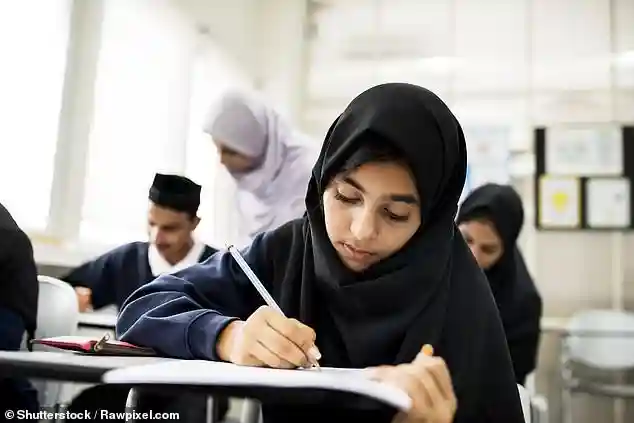Austria has announced plans to prohibit girls under the age of 14 from wearing Islamic headscarves in school, citing concerns that the garments symbolize oppression.
State Secretary Jorg Leichtfried and Integration Minister Claudia Plakolm unveiled the draft law on Thursday, setting the stage for a heated parliamentary debate.
Plakolm argued that headscarves on young girls can affect their sense of self, stating: “Girls develop feelings of shame, they get a distorted body image, an unstable sense of self-worth.”
The proposed ban is scheduled to take effect in the 2026/2027 school year.
Growing Numbers Prompt Action
The idea of restricting headscarves was first floated in 2019, but officials now stress that the situation has changed.
The number of Muslim girls under 14 in Austria has reportedly risen from 3,000 to 12,000, prompting authorities to take action.
The ban would apply across all schools—public and private—and cover classrooms, playgrounds, gymnasiums, and school sports fields.
Third-party school events, however, are exempt.
How the Ban Will Be Implemented
Local media report a two-step approach.
The first phase, starting in February 2026, will focus on raising awareness.
Schools, parents, and children will be briefed on the rules.
From September 2026, sanctions will kick in.
If a girl under 14 is seen wearing a hijab or burqa, she and her parents will meet with the school administration.
Persistent non-compliance could escalate to the District School Authority, and in extreme cases, local youth welfare agencies may become involved.
Parents could face fines ranging from £130 to £700 or even up to two weeks in prison. The initial draft suggested fines up to £880.
Officials Emphasize Protection Over Morality
Plakolm has repeatedly framed the ban as a child protection measure, not a moral judgement.
When questioned in September why pupils can wear crosses but not headscarves, she insisted the headscarf is a “symbol of oppression” and argued that schools must remain safe spaces for girls to grow freely.
She added on X: “Girls should be able to grow up freely, visibly, and self-confidently in our country.
That is why we have decided to ban the children’s headscarf.”
Plakolm also stressed that the move will be paired with awareness campaigns, empowerment initiatives for girls, and education for boys.
Leichtfried echoed this, saying that external dress codes can “severely impair the development of girls”, and that the government’s objective is to shield children from undue pressures or assigned roles.
Political Reactions and Controversy
The plan has sparked debate. Yannick Shetty, a NEOS parliamentary group leader, commented: “I don’t want an eleven-year-old to have to worry for even a second about whether her hair is properly covered.”
On the other hand, Austria’s Islamic Religious Community (IGGO) criticized the proposal, calling it “symbolic politics at the expense of children and democracy.”
The group pointed out that prior efforts to reach a constitutional solution were ignored.
Austria’s top court previously struck down a similar ban in 2019, ruling it violated constitutional protections for religious freedom.
However, the current coalition—comprising the OVP, Social Democratic Party, and NEOS—expressed confidence that the new law will stand.
Government Stands Firm on Girls’ Rights
Plakolm emphasized the government’s focus on protecting children rather than enforcing moral standards: “For us, the right of parents to religiously educate their children ends where girls are oppressed and self-determined upbringing is not possible.
We protect girls, not moral standards. We protect their right to childhood.
We protect their freedom to be visible without shame.”
She concluded that the ban represents a clear step toward ensuring girls in Austria grow up free, visible, and self-determined, with rules that are “clear, fair, and well-founded.”
Share on Facebook «||» Share on Twitter «||» Share on Reddit «||» Share on LinkedIn